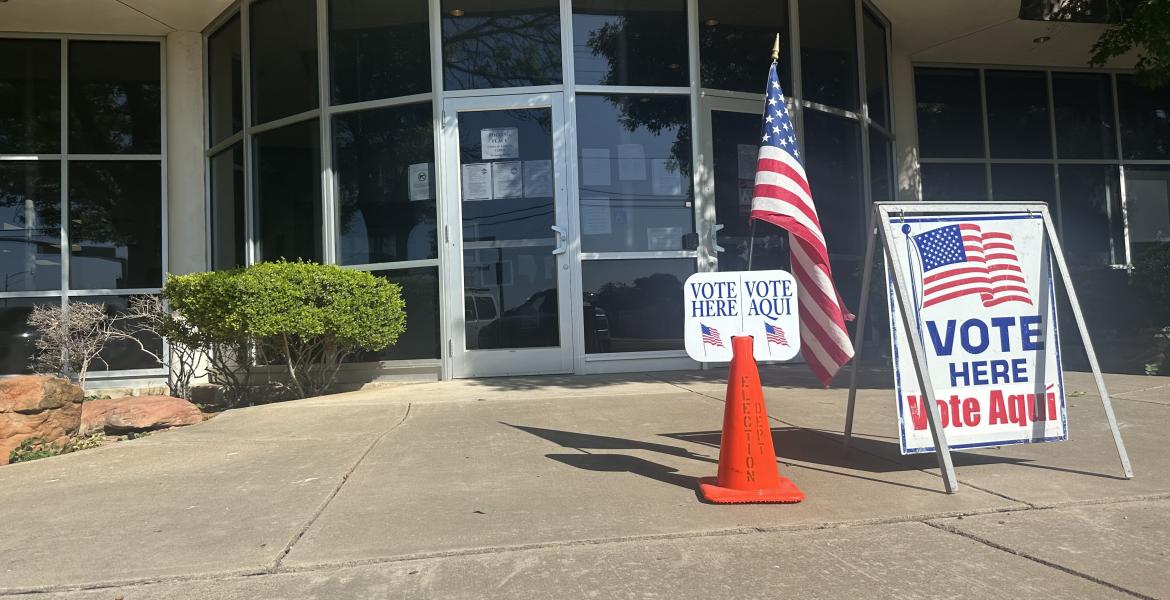If you can bake cookies, you can cook meth. So the saying goes. And while it may be just a little more complicated than that, experts agree that the harrowing drug has become just as accessible as cookie cutters in the average American kitchen.
It’s known by a number of names—ice, crystal, meth, speed—and is commonly referred to as ‘the small town drug,’ ‘poor man’s cocaine’ or ‘the drug that doesn’t discriminate.’ Those portrayals may be true, however meth is rapidly becoming a global problem. While it’s not discriminating, it’s also not being choosy about town size.
San Angelo is one of the towns meth has chosen. Or rather, San Angelo has chosen meth. In any case, the rates are on the rise, and that after a slow and gradual descent over the past three years.
Why are rates going back up, and who is using it? The answers, unfortunately, are hard to define. But in looking to the past and comparing to the present, strong hypothesis and trends emerge that suggest a number of contributing factors.
History
In 2004-2005, San Angelo saw an epidemic, says Lieutenant Fincher, Division Commander of the San Angelo Police Department’s Intelligence Division and Narcotics Detective with over 11 years of experience. Fincher says that by 2005, the meth problem had reached its peak.
“Back then, you got it at the door,” said an anonymous source who has experience with the drug. “You couldn’t not get it.”
Almost 350 defendants were arrested in 2005 for methamphetamine, an all-time high in Fincher’s career. In the years that followed, it gradually started tapering off, with as few as 77-80 in each of the years from 2009-2011.
“The past two years it’s picked back up,” Fincher says. “In 2012, we jumped up to 151 arrests. In 2013 year-to-date we’re at 162…I don’t know how the rest of the year is going to pan out. It’s going to be more than last year, but it pales in comparison to 2004 and 2005.”
Even at a third of San Angelo’s peak-time high of 347, the number is already double that of what it was two years ago, and there are still two-and-a-half months left on the calendar.
To further complicate the matter, usage doesn’t seem to be confined to a specific group. Not only is the drug everywhere, but everyone is using it.
“It has no demographics, it has no financial restrictions on it, it has no racial restrictions, no male/female restrictions, it affects all walks of life,” says Fincher.
Jerry Wheetley, a Counselor at the Alcohol and Drug Abuse Council for the Concho Valley (ADACCV), says that his center sees the same: a mix of people from all social backgrounds, all races, ages and sexes. Wheetley has also noted a drop in patients since the early 2000s, but says that he as well is seeing a few more these days.
“For about the past three years, meth has been on the rise, at least here in our facility,” says Wheetley. On average, the ADACCV handles 36 patients at a time. Of those 36, 75 percent are meth addicts, Wheetley says.
Over the past few years, methamphetamine has become increasingly available, thus driving the costs down.
Just before San Angelo was at its epidemic peak, manufacture had become a problem. Labs were sprouting up all over Tom Green County, and the drug was being sold at a higher price. In 2004, many Mexican superlabs came online and flooded the market. Meth was cheap and accessible, and usage was rampant.
Luckily, the superlabs have inversely affected the manufacture within the county. Whereas before there were several, there are currently about four, a CNN map shows. Fincher says this number is pretty accurate.
Recent laws passed in the state have also made manufacture more difficult, including the restrictions put on the purchase of pseudoephedrine, one of meth’s main ingredients. Still, self-manufacture persists, however to a much lesser extent than was seen previously.
The prevalence of the superlabs, however, and the ease of self-manufacture and the relative simplicity of the recipe has kept the cost down. Nowadays, the drug is one of the cheapest on the market, with some of the strongest effects, both long and short term.
Affects and Effects
“It’s like a shot of euphoria,” our source said. “When you take it, you feel great. It’s not better than sex, but it leads to it. They're related. Like cousins.”
Many users report a high that is stronger and longer than the one achieved by other drugs, and say that not only do they feel good and capable, they also feel confident and even sexy.
That sexiness has been documented in several photos collected and distributed as part of an awareness campaign, called “Faces of Meth.”
In the photos, the deterioration and aging of many users over a span of time has been documented, showing slack skin, gaunt figures and extreme tooth decay known as “meth mouth.”[[{"fid":"812","view_mode":"default","fields":{"format":"default"},"type":"media","attributes":{}}]]
Jerry Wheetley says he’s also seen a few of these and other side effects in his work at the ADACCV.
“It affects the brain, the neurotransmitters, the chemicals within the brain,” Wheetley begins. “A lot of them break out in sores, where they actually pick them from their body. There’s a ‘tweaking effect,’ high blood pressure…it’s like a biohazard because of the chemicals used and how dangerous it is,” he says. “It’s as dangerous as probably heroin, but the availability of it makes it worse.”
With the amount of media attention the drug has seen over the past several years, it seems absurd that users wouldn’t be aware of the dangers associated with use, but the drug still prevails, partly because of how addictive a dose can be.
“I know they know what it’ll do,” says Fincher. “To my knowledge, [there’s no casual user]. I’ve interviewed so many people involved in meth that say once you try it, you can become addicted from the first time.”
Consequently, the rates of relapse are also relatively high. Locally, a hard number on the amount that relapse is difficult to define, and both Wheetley and Fincher say it goes both ways. Some numbers on a national level put estimates as high as 92 percent for former addicts to fall back on the drug, other estimates show a more moderate 60, and each instance varies significantly from case to case.
Wheetley identifies different stages of addiction that influence an addict’s likelihood of relapse.
At the ADACCV, “First, they are screened to determine if there is a problem. If there is a problem, we refer them to the appropriate program,” Wheetley says.
The ADACCV has several different services, including in- and outpatient, medical program referrals and counseling. The center also works closely with other counselors and medical staff in the area to provide the most suitable assistance needed for each individual case.
Cases vary and some come in on their own free will; others are referred by separate entities. Treatment is also different for each individual, and distinctions are even made between the sexes. According to Wheetley, the drug affects women differently than men in severe cases.
“If it is a severe case, it requires an intensive residential program. Our men’s facility is approximately 45 days…our female facility is approximately 60-90 days, Wheetley says.
“Usually there are some other problems in other areas that need to be addressed when they’re in treatment, [such as] parenting, cooking, taking care of the kids, things the drugs actually took away or that they never learned because they started using drugs at an early age.”
If the auxiliary issues don’t exist, women typically stay in the facility for a 60-day period and are released. Women who do have families or children that use the drug may bring their children with them, providing they are under 5 years of age.
Cost of treatment is dependent upon income. Patients that qualify for a state-funding program receive treatment for free. Those who do not meet those requirements will either be put into a program at the ADACCV or at another facility dependent on the user’s needs.
Meth, Crime and the Future
Aside from the physical and psychological effects, a link also exists between meth users and other criminal activity.
“I can’t give you a percentage…I can tell you that it is directly related to the drug use market…we have a bad problem with drug addicts stealing stuff,” Fincher says.
Consistent with the ever-increasing press releases sent out by the SAPD, meth users are often behind home and auto burglaries, theft and shoplifting. Wheetley and Fincher both state that this is common as a means for addicts to support their habits.
Investigations in the area have also linked a recent increase in sexually transmitted diseases to a group of meth addicts in Tom Green County; the result of needle-sharing and trading sex for drugs.
Determining why usage is picking up is no easy task. Fincher says, “Well, I’m monitoring it…I can’t tell exactly off hand what is causing it [to rise], I think there’s more of a population increase in this community than people realize—a lot more—I’m sure that’s a contributing factor. The economy is doing better, that’s a contributing factor. There’s lots of contributing factors.”
“Probably because it’s cheap and it’s easy to get a hold of and there’s such a large quantity of it in this area,” Wheetley says.
How steadily meth use will increase and whether or where it will stop is unknown. At the present, it doesn’t appear to be slowing down any. Superlabs and laws have halted much of the meth manufacturing in the area, but home laboratories are still popping up.
Meanwhile, meth addiction is spreading to more users and adversely affecting the population. There a number of facilities in place to help struggling addicts who need it, and the ADACCV is one.
“There is no quick fix for this,” warns Wheetley. “It takes somebody with a desire to want to quit and willing to do whatever it takes to do that.”
But the help is available for those who need it. If you or someone you know is struggling with addiction, contact the Alcohol and Drug Abuse Council of the Concho Valley at 325-224-3481 or at the 24-hour crisis hotline: 1-800-880-9641. For more information, visit the website at http://www.adaccv.org/index.php
Subscribe to the LIVE! Daily
Required






Post a comment to this article here: